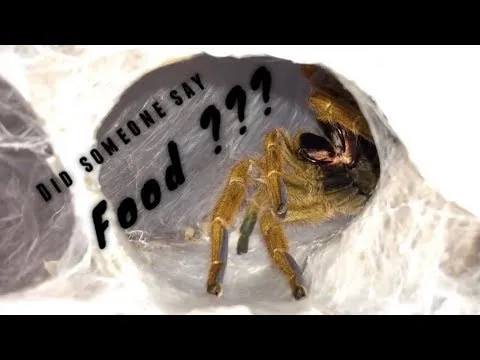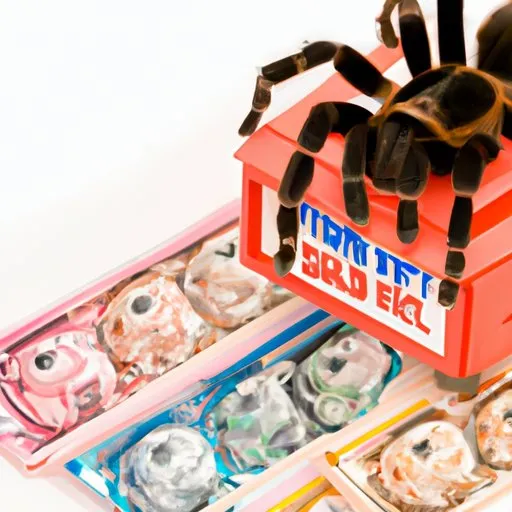What Factors Influence Tarantula Cost?
The cost of a tarantula is influenced by several factors, making it crucial to understand these elements before acquiring one. The species of tarantula is the primary determinant, with some species being more common and, therefore, less expensive than others. Rarer or more unique species often command higher prices due to their limited availability and desirability among collectors. Age and size also play a role; younger tarantulas, or spiderlings, are typically less expensive than adults because they require more care and time to reach maturity. The tarantula’s origin, such as whether it was captive-bred or wild-caught, also affects the price, with captive-bred tarantulas often costing more due to their health and sustainability advantages. Furthermore, the breeder’s reputation and the tarantula’s overall health condition are significant factors influencing the cost. Breeders known for their ethical practices and healthy tarantulas may charge more, providing assurance of a well-cared-for pet.
Tarantula Species and Their Price Differences
Different tarantula species exhibit a wide range of price points, reflecting their availability, temperament, and appearance. For instance, some beginner-friendly species, like the Chilean Rose Hair tarantula (Grammostola rosea), are relatively affordable, often costing between $20 to $50. These tarantulas are known for their docile nature, making them ideal for novice owners. On the other hand, more exotic species, such as the Cobalt Blue tarantula (Cyaneopubescens) or certain Pokie species (Poecilotheria), can be significantly more expensive, with prices ranging from $75 to over $200. These tarantulas are sought after for their striking colors and unique behaviors, but they may also require more specialized care. The price differences also reflect the tarantula’s origin and the breeder’s practices; captive-bred tarantulas are often preferable due to their health and the reduced impact on wild populations. The species’ popularity in the pet trade and its breeding success also influence its price.
Beginner-Friendly Tarantulas and Their Costs

For those new to tarantula ownership, selecting a beginner-friendly species is crucial. These tarantulas are generally less venomous, have a calmer temperament, and are more tolerant of handling errors. The Chilean Rose Hair tarantula is a popular choice due to its gentle nature and relatively low cost, typically ranging from $20 to $50. Other beginner-friendly options include the Mexican Red Knee tarantula (Brachypelma hamorii), which is known for its beautiful coloration and docile behavior, priced similarly to the Rose Hair. These species are also relatively easy to care for, making them an excellent starting point for learning about tarantula husbandry. The price of a beginner-friendly tarantula will vary based on its size and origin, but they are generally more affordable than their more exotic counterparts. Beginners should also factor in the cost of the enclosure, substrate, and other essential equipment when budgeting for their new pet. The image of a beginner tarantula like the Chilean Rose Hair will give a better understanding for the reader.
Intermediate Tarantula Costs and Considerations
As enthusiasts gain experience, they often move on to intermediate tarantula species, which may require a bit more specialized care or have a slightly more defensive nature. Species like the Arizona Blonde tarantula (Aphonopelma chalcodes) or the Green Bottle Blue (Chromatopelma cyaneopubescens) often fall into this category. The costs for these species range from $50 to $100 or more, depending on factors like size, origin, and breeder. Intermediate tarantulas may need specific environmental conditions, such as higher humidity or different substrate types, which can increase the overall cost of care. Additionally, these tarantulas might have more particular dietary needs or be more sensitive to handling, requiring a more careful approach from the owner. It’s also essential to consider the potential health issues associated with certain intermediate species. Careful research into the specific needs of these tarantulas is essential before purchase. An intermediate tarantula like Green Bottle Blue, will give a better understanding for the reader.
Advanced Tarantulas Pricey Pets
Advanced tarantulas are often the most expensive, appealing to experienced collectors and those seeking unique specimens. These tarantulas are often rare, have specific care requirements, or possess striking appearances. Species like the Cobalt Blue tarantula, known for its vibrant coloration, can cost upwards of $75 to $200 or more. Some Poecilotheria species, which are arboreal and known for their potent venom, can be even pricier, sometimes exceeding $200. These advanced tarantulas often require specialized enclosures, temperature and humidity control, and a deep understanding of their behaviors to thrive. The high cost of advanced tarantulas reflects their rarity, the expertise required to breed and raise them, and the potential risks associated with their venom or temperament. Owners of advanced tarantulas should also budget for specialized equipment and be prepared to handle any health issues that may arise. An advanced tarantula like the Cobalt Blue will give a better understanding for the reader.
Where to Buy a Tarantula and What to Expect

The purchase location significantly impacts the cost and quality of a tarantula. Reputable breeders are the best source for healthy, captive-bred tarantulas. While they may charge a premium, they often provide essential information about the tarantula’s lineage, health, and care requirements. Local pet stores can also be an option, but it’s essential to assess the store’s knowledge and the tarantulas’ condition. Avoid purchasing tarantulas from unverified sources, as they may be wild-caught or have health problems. Online marketplaces and specialized reptile expos provide a wide variety of tarantulas, but buyers should thoroughly research the seller’s reputation before making a purchase. When buying, inspect the tarantula for any signs of illness or injury. Ask about its feeding history, and ensure the seller can provide guidance on its care. Understanding the seller’s practices and the tarantula’s history will significantly influence the overall cost and the long-term success of owning your new pet.
Tarantula Costs Beyond the Initial Purchase
The initial purchase price of a tarantula is just the beginning. Ongoing costs must be considered to ensure your pet’s well-being. These costs can be divided into essential, enclosure, food, and long-term care categories. Each of these areas requires ongoing investment to provide a healthy and enriching environment for the tarantula. The price of maintenance items can vary, depending on the species and the owner’s choices regarding enclosures and feeding practices. Budgeting for these ongoing expenses is crucial to responsible tarantula ownership. Failing to account for these costs can lead to a decline in the tarantula’s health and quality of life.
Essential Costs
Essential costs include the fundamental items required for the tarantula’s survival and well-being. These include the cost of the enclosure itself, which will vary depending on the species and size of the tarantula. Substrate, the bedding material for the enclosure, is another essential expense; the type of substrate will depend on the species’ needs (e.g., coconut fiber, peat moss). Water dishes are necessary for providing fresh water, and these should be regularly cleaned and refilled. Thermometers and hygrometers are crucial for monitoring the enclosure’s temperature and humidity. Depending on the species, heat sources such as heat mats or lamps might be required, adding to the cost. These essential items ensure the tarantula’s basic needs are met, creating a suitable habitat. The cost will fluctuate based on the specifics of the tarantula, and these should be taken into consideration before buying the tarantula.
Enclosure Costs

Enclosure costs are a significant part of the ongoing expenses of owning a tarantula. The price of an enclosure varies depending on the size, material, and features. Glass or acrylic tanks are common choices, with acrylic generally being lighter and less prone to breaking. The size of the enclosure must be appropriate for the tarantula’s species and size; a larger tarantula requires a larger enclosure. Ventilation is essential, so the enclosure must have adequate ventilation holes or mesh. The cost of the enclosure itself can range from $20 to over $100, depending on its size and features. Additional costs may include decorative items, such as branches, hides, and artificial plants, to enrich the tarantula’s environment. Regular cleaning and maintenance of the enclosure are essential, and this may also require purchasing cleaning supplies. Proper enclosure setup is important to ensure the tarantula’s safety and well-being. The image of a tarantula enclosure shows the requirements for the pet.
Food and Substrate Costs
Feeding a tarantula involves regular purchases of live insects, such as crickets, mealworms, or roaches. The type and size of insect will depend on the tarantula’s size and species, and the cost of these feeder insects varies based on the supplier and quantity purchased. Purchasing in bulk can often reduce the per-unit cost. Substrate, the bedding material within the enclosure, needs to be replaced periodically. The frequency of replacement depends on the type of substrate and the tarantula’s habits, but this is an ongoing expense. Additional costs might include supplements, such as calcium or vitamin powders, to ensure the insects are nutritionally complete for the tarantula. Ensuring the tarantula’s diet is nutritious and varied is vital for its overall health and longevity. The substrate must be replaced to ensure that the tarantula remains healthy and the environment stays hygienic. An image of a tarantula feeding on a cricket, and the different substrate types will give a better understanding for the reader.
Long-Term Tarantula Costs
Long-term costs include ongoing care and potential veterinary expenses. While tarantulas are relatively low-maintenance pets, unexpected health issues or injuries can arise, requiring veterinary care, which can be expensive. Regular monitoring of the tarantula’s health is essential to catch any potential problems early. Replacement of equipment, such as heat sources, thermometers, and hygrometers, might be needed over time. Additionally, the cost of the tarantula’s diet and enclosure setup will need to be continually factored in throughout its lifespan. These long-term expenses can fluctuate, but they must be considered to ensure the tarantula receives the best possible care. Responsible ownership also includes having funds available for emergencies. This will help to ensure the tarantula remains healthy and comfortable throughout its life.
In conclusion, understanding the cost of a tarantula involves more than just the initial purchase price. It encompasses various factors, from the species and its origin to the ongoing expenses of food, enclosure maintenance, and potential veterinary care. By researching these factors and budgeting accordingly, prospective tarantula owners can make informed decisions and provide their pets with a healthy, enriching environment. With careful planning and responsible care, owning a tarantula can be a rewarding experience.
